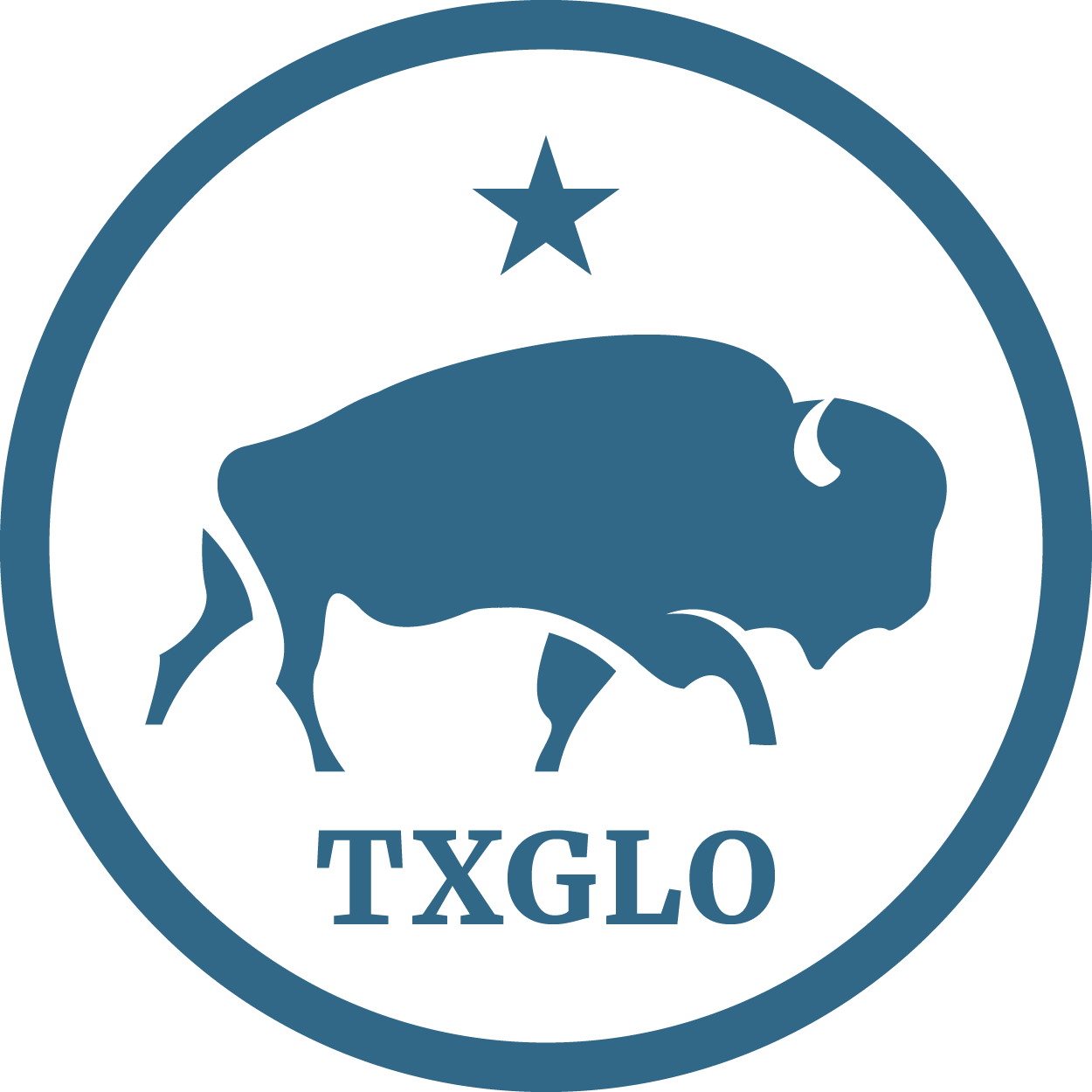Combined River Basin Flood Studies (RBFS)
The GLO launched the Combined River Basin Flood Studies in the 49 counties which received a presidential disaster declaration due to the impact of Hurricane Harvey plus 4 counties in the Lower Rio Grande Valley that received a presidential declaration for flooding in 2015. The studies aim to increase resiliency by helping communities prioritize effective mitigation strategies and pursue additional implementation funds.
RBFS Website
Texas Disaster Information System (TDIS)
The Texas General Land Office has partnered with Texas A&M, Institute for a Disaster Resilient Texas, to develop, the Texas Disaster Information System (TDIS) is a comprehensive data platform intended for natural disaster management in Texas. TDIS aims to streamline the ingestion, storage, processing, and utilization of disaster-related data, with a focus on improving natural disaster preparedness, response, recovery, and mitigation efforts across the state.
TDIS Website
Community Health and Resource Management (CHARM) Platform Development
The CHARM software is currently bolstering local planning efforts by running scenario planning workshops with local communities. The GLO is leveraging existing software and make it more readily available. With several technology updates, the CHARM platform will be developing online data deliverables for use by the communities. The GLO will fund multi-day technical training sessions to further build planning competence at the local level. When integrated with the disaster database project, this enhancement would provide local communities with the information, tools, and technical expertise to make informed planning decisions.
CHARM Website
Green Infrastructure in Texas (GIFT)
The Texas General Land Office has partnered with Texas A&M AgriLife Extension Service’s Green Infrastructure for Texas (GIFT) Program to provide outreach and off-the-shelf products for communities to incorporate green infrastructure practices to reduce the risk of flooding and storm-water runoff. When this study concludes, communities will have access to green infrastructure engineering designs and a cost benefit analysis support for GI projects. These resources are intended to build local community capacity to implement nature-based solutions for storm-water management.
GIFT Website
Hydrologic Engineering Center-River Analysis System (HEC-RAS) Parallelization Hydrologic Engineering Center-River Analysis System (HEC-RAS) software is used to calculate aspects of hydrologic engineering. The GLO is working with the Texas Water Development Board and the United States Army Corps of Engineers on modernizing the RAS code. This will expand the capabilities of HEC-RAS (RAS 2025) to incorporate larger domains and/or multiple watersheds and river network, with higher resolution than current shared memory systems. These upgrades will allow for more complex modeling scenarios that provide for better understanding of flood risk.
RAS 2025 Website
RAS 2025 Demo Video
Texas Integrated Flood Framework (TIFF)
The GLO is actively coordinating with the United States Army Corps of Engineers, United States Geological Survey, and Texas Water Development Board to ensure flood planning efforts are not duplicated. Through the establishment of intergovernmental workgroups, this grant seeks to standardize data sharing, flood modeling, and planning activities. TWDB is the grant recipient and the lead agency for completing this work.
TIFF Bathymetry Report
TIFF Annual Reports
TIFF Website
North Central Texas Council of Government
Transportation and Stormwater Study
The purpose of this study is to increase flood risk awareness and resiliency in North Dallas-Fort Worth Study Area through innovative planning-level analysis and integration of transportation, environmental, and stormwater planning. The result of this study will improve the delivery of consolidated, adaptive infrastructure before expected population growth, making addressing these issues more difficult and costly.
Leon River Watershed and Cowhouse Creek Watershed Flood Study
The Leon River and Cowhouse Creek watersheds cover 1.3 million acres across seven counties and encompass important regional hubs like Fort Hood and Gatesville. These watersheds have experienced devastating floods that resulted in significant loss of life, infrastructure, and economic impacts. This study will develop surface and groundwater flow models to identify placement for flood early warning system sensors and implement flood-risk reduction and high-water safety education programs.
Coryell County Collaborative Flood Study and Emergency Communication System
Model Storage and Management System (MS2)
During the 86th Legislative session, the Texas Water Development Board (TWDB) was tasked with developing and updating flood risk maps using current data and technology standards. The resulting models and maps will be periodically updated and used for future flood mapping and flood planning. The Model Storage and Management System (MS2) was developed as a collaborative project between TWDB and the Texas Disaster Information System (TDIS) to store the models, and a grant from the GLO to TWDB will support the continued maintenance and enhancement of the existing MS2) application and hosting/sharing of related data through TDIS.
Measuring, Mapping, and Managing Flood Risk (M3FR)
Through an interagency agreement, Texas A&M’s Institute for a Disaster Resilient Texas (IDRT) is achieving two objectives. One objective is to create a statewide “Damage Plain” model. This model uses nearly half a century's worth of historic flood insurance claims to predict the annual likelihood of flooding. The second objective is to turn complex data into easy-to-understand visualizations and messaging to help emergency managers make well informed decisions in the face of flood risks.
M3FR Website
Developing Environmental Responses and
Models for Catastrophic Flooding Events
Tarleton State University and Texas A&M AgriLife are analyzing the impact of flooding on soil quality. Depending on storm intensity, soil and sediment transport can impact locations on the stream bank or downstream. The study will evaluate the impacts of storm events on contaminant transfers within the watershed.
Preliminary Report
Strategies for Texas Beach Fecal Indicator Bacteria (FIB) Reductions
The Texas Coastal Resiliency Master Plan (TCRMP) has identified failing or aging wastewater systems in the Texas coastal zone as a high concern for sanitary sewer overflow (SSO) and unauthorized discharge (UD) incidents occurring in wastewater collection, transmission, and treatment systems. This study funds the development and deployment of a modeling tool that will assist with pinpointing problematic and failing wastewater systems that need immediate repair or replacement to reduce the exposure of these systems to disasters and storm impacts as well as reduce the exposure of fecal bacteria on human populations, thus empowering coastal communities in Texas in safeguarding the health of their local residents, and their tourism economies. The results of this study would assist with engaging local leaders in developing projects to address the failing systems most in need of funding to repair or replace them.
Texas Coastal Resiliency Master Plan Website
Infrastructure Benefit Study
Damage to a community’s physical infrastructure can slow or even stall recovery efforts after a disaster. Using case studies, this study will document the impact of infrastructure projects on Texas communities’ s ability to recover their economy and livability and to increase resiliency against future events.
Alternative Housing Study
Hurricane Harvey caused more than 30,000 people to leave their homes, resulting in a temporary housing program with numerous logistical challenges. This study evaluates alternative housing options to identify innovative solutions that are disaster resilient and can be deployed quickly for survivors to reduce the amount of time these survivors are displaced.
Presentation
Lower Rio Grande Valley (LRGV) Colonias Study
Colonias are socioeconomically deprived, unincorporated housing settlements on the Texas-Mexico border that may lack essential services like drinking water, paved roads, sewage treatment, and stormwater drainage. The Lower Rio Grande Valley counties of Hidalgo, Starr, Cameron, and Willacy host the largest designated colonias in the U.S., yet the last mapping endeavor by the State of Texas was completed in 2014. This study will identify and map colonias in this region to determine how they have changed over the last ten years, and their current flood exposure based on new regional development.











